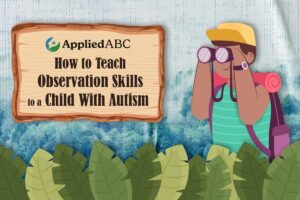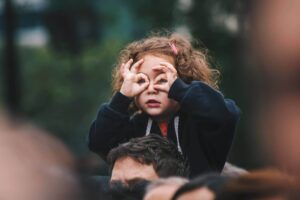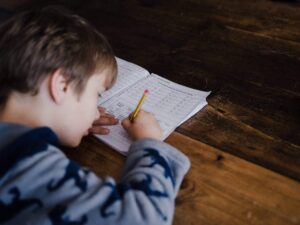
What Is Observational Learning?
Observational learning occurs in social settings where a learner views a model — a parent, teacher, or peer — displaying a behavior, and then the learner adopts that behavior as their own. Learners can acquire behaviors through observation even without direct intent from the model, which can lead to the adoption of inappropriate or undesirable behavior from unsatisfactory modeling.
According to Albert Bandura, one of the psychologists who proposed the Social Learning Theory, children perpetually learn through observation. Bandura also concluded that children’s behaviors are informed by their environment, and that aggression, specifically, can be learned through observation.
Social Cognitive Theory
Expounding on the Social Learning Theory, Bandura also proposed the Social Cognitive Theory, which places a stronger emphasis on mental processes required for learning new behaviors.
In the Social Cognitive Theory, for a learner to acquire a behavior through observation, four conditions must be met:
Attention
First, in observational learning, the learner must acknowledge and have their attention directed to the model. Bandura found that learners generally give more attention to models with appearances similar to themselves. Models might also receive more attention when they are given rewards for their behavior or have social prominence.
Retention
Once the model has the learner’s attention, the learner must remember the behavior that the model displayed. If a learner cannot recall a behavior, the likelihood that they will replicate it becomes diminished.
Reproduction
After seeing and retaining the behavior of a model, the learner must be fully capable of reproducing what they witness.
Motivation
Finally, a learner must also have the motivation to repeat the behavior. Despite their attention, retention, and ability to reproduce the behavior, a learner is unlikely to imitate a model without motivation to do so. Motivating factors can be both positive and negative. For example, understanding that a model received punishment for displaying a behavior can discourage a learner from displaying that same behavior.
The Bobo Doll Experiment
One of the contributions to Bandura’s Social Cognitive Theory included his “Bobo doll” experiment. The experiment began with two initial scenarios where children were individually introduced to an adult model in an isolated room. In one corner of the room, the child had access to engaging activities. In an opposite corner of the room, the adult model received a toy set, a wobbling “Bobo” doll, and a mallet. The experimenters gave the children 10 minutes in the room and told them that they only had permission to play with the toys in their own corner.

For the experiment’s next stage, the children were allowed to play in another room with toys, but after two minutes, they were told they could no longer play with the toys. Instead, they were allowed to return to the first room, where they now had access to the Bobo doll without an adult model. The study found that the children with exposure to aggressive adult models were more likely to be physically and verbally aggressive toward the doll.
Teaching Observation Skills to Children With ASD
As children diagnosed with autism may have difficulty establishing new behaviors based purely on observation, it is imperative that they have a supplemental structure for learning new skills and behaviors. While children with autism may struggle to learn through observation, this does not mean they are incapable of doing so. There is limited research on teaching observational learning to children with autism; however, educators may be able to implement a few strategies to enhance observational learning.
Sustained Attention
In accordance with Bandura’s Social Cognitive Theory, behavior adoption begins with attention. Educators can reward children for their extended attention to reinforce this behavior. As the children become more attentive, the expected duration of their concentration may be extended.
Generalized Imitation
Although observational learning and generalized imitation differ, allowing children to watch adults or peers and prompting them to imitate can lead to positive results. With positive reinforcement, the child may be able to imitate a model without verbal instruction, which is more representative of true observational learning.
Differentiating Correct and Incorrect Behaviors
Assisting a child with ASD to determine whether a model’s behavior is correct or incorrect may also be beneficial in the development of observation skills. In this technique, the educator may allow the child to answer whether a model’s action is correct or incorrect by pointing to color-coded indicators. At first, the child will likely require verbal prompting for their answer, but over time, the educator may stop prompting as the child begins to accurately categorize the model’s behavior.
Discrete Trial Training (DTT)
Discrete Trial Training programs aim to help children diagnosed with autism learn skills and behaviors that they may have difficulty gaining on their own solely through observation. With time and effort, Discrete Trial Training can strengthen the attention and motivation of children with autism while also helping them learn to distinguish important stimuli from general environmental stimuli.
For other goals, children in Discrete Trial Training programs will work toward generalized applications for learned behaviors and clearer communication. When children begin to comprehend simple initial tasks, their instructions can gradually become more complex as they progress in the program. To assist with observational learning, educators may implement Discrete Trial Training programs which simplify tasks and explain them plainly for the child. With the proper support and effort, children diagnosed with ASD can use observational skills for developing new skills for growth.
Sources Cited:
MacDonald, J. & Ahearn, W.H. Teaching Observational Learning to Children With Autism.
Taylor, B.A. & DeQuinzio, J.A. Observational Learning and Children With Autism
Townley-Cochran, D., Leaf, J.B., et al. Observational Learning for Students Diagnosed With Autism: A Review Paper.






